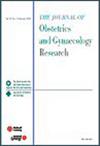Eosinophils and other blood cell traits in the risk of infertility population: A Mendelian randomization analysis
Abstract
Background
Abnormalities in blood cell parameters, including eosinophil traits, have been implicated in reproductive system damage. However, their specific relationship with infertility and abnormal spermatozoa remains unclear.
Objective
In this study, we investigated 23 blood cell parameters, including eosinophil traits, using bidirectional Mendelian randomization analysis to explore their causal relationship with male and female infertility.
Methods
We utilized data from the INTERVAL study, UK Biobank, Blood Cell Consortium, and GWAS Catalog for 23 blood cell parameters, as well as GWAS data from the FinnGen database for two infertile populations and one clinical phenotype related to infertility. MR analysis was conducted employing various methods, including inverse-variance weighting (IVW), to obtain statistically significant results.
Results
Among the blood cell parameters examined, three were associated with the risk of male infertility: eosinophil percentage of granulocytes, eosinophil cell count, and mean sphered cell volume. Among these, eosinophil levels exhibited the most significant correlation with male infertility. In contrast, no blood cell traits were identified as risk factors for female infertility. However, basophil cell count and hemoglobin concentration-related traits appeared to serve as protective factors for female infertility.
Conclusion
Abnormal eosinophil levels may increase the risk of male infertility. However, given the limitations inherent in the observational design of this MR study, further research is required to assess the potential therapeutic effects of eosinophil reduction in idiopathic male infertility. Regarding female infertility, the study suggests that certain blood cell traits, such as basophil cell count, may act as protective factors, which warrants further investigation.

 求助内容:
求助内容: 应助结果提醒方式:
应助结果提醒方式:


